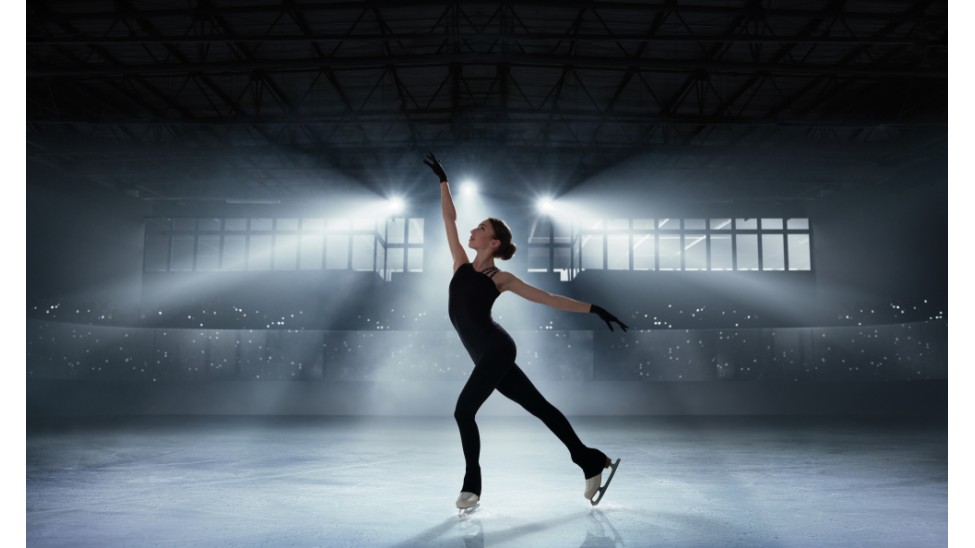
Why Do Ice Skaters Wear Dresses?
Posted on - 12th January 2022
In the world of professional and amateur figure skating competitions, the default piece of gymnastics clothing is one form of dress or another. In this article, we’re going to be discussing why the dress has gained such a popularity amongst athletes.
The History of Figure Skating
The history of competitive ice skating isn’t a long one. However, it is a dramatic one.
Ice skates as they exist today – where blades are screwed onto boots – were invented in the latter part of the 18th century by a Welshman named Robert Jones. This new design was far more efficient than the previous one – which involved strapping skates onto boots. As a result of this fantastic new design, a sport developed around skating for the very first time. This sport was known as English Style Skating – so named because the Jones’ ice skates were first manufactured in London.
However, while it was popular, English Style Skating was a very different style of skating to modern figure skating. Like medieval dancing, English Style Skating relied on a set number of approved moves and techniques. These moves and techniques couldn’t be expanded upon under any circumstances, meaning that competitions were quite repetitive.
In the early 1860s, however, an American known as Jackson Haines began to add new and exciting techniques to the sport – with his most noticeable innovation being sit spin. As a result, Haines is often referred to as ‘The Father of Skating.’
Modern Figure Skating
Initially called International Style, Haine’s new way of skating quickly became a sensation in Europe. The first European Figure Skating Championships were held in Hamburg, Germany in 1891, and the first World Figure Championships were held in St. Petersburg, Russia several years later. Initially, only men were allowed to compete in these competitions; however, from 1902 women began to compete in the World Figure Skating Championships.
By the time of the first Summer Olympics in 1908, Figure Skating had already grown to such an extent that it was one of the first sporting events held during those initial games. During the 1908 games, competitors wore long dresses, not too different from day to day wear – quite appropriately, men wore suits.
Sonja Henie
It wouldn’t be until the 1924 Olympics that 11 year old figure-skating prodigy Sonja Henie would wear something vaguely similar to modern figure skating dresses. This was a long sleeved, pale dress which featured a short skirt.
Although Henie came last in that competition, she was nonetheless set up for the rest of her career. From 1927 until 1937, she won 10 consecutive World Figure Skating Championships, and in 1928 she won the first of her three Olympic gold medals. As a result of this early promising start to her career, Henie quickly became something of a icon, and her choice of apparel was copied by millions of female athletes from across the globe.
The Status Quo
By the early 1970s – long after Henie herself had retired from the sport – the short skirted dress had become the defacto standard for figure skating gymnastics wear.
It wouldn’t be until 1988 that this status quo began to be challenged, when American medical student Debi Thomas wore a unitard and Katarina Witt of East Germany wore a feathery skirtless leotard. In response to this, the International Skating Union instituted a rule wherein skirts were now required for ladies competitions. This rule was known informally as both the ‘Katarina’ and ‘Debi Thomas’ rule.
This rule would not be revoked until 2004, when trousers and unitards were allowed back into competitions. In 2006, Irina Slutskaya became the first female athlete to compete in the olympics in a unitard.
Today, dress code guidelines for figure skating competitions are somewhat vague – with the idea to provide athletes with as much freedom to choose their clothes as possible. However, despite this, dresses are still far more popular than gymnastics leotards when it comes to figure skating. There is no singular answer as to why; some suggest that judges may have a bias against athletes wearing unitards or leotards; others, such as Rene Gelecinskyj, a skating coach and skating outfit designer from Minnesota, figure skating is simply an inherently conservative sport for both competitors and judges.
However, according to Lori Charbonneau, the truth is a little more nuanced. Lori says the rules for if and when to wear anything other than a traditional figure skating dress are more implicit than explicit. For example, a modern, upbeat piece of music would require a unitard over a dress. Meanwhile, an older, slower piece may be more suited to a dress.
For All Your Gymnastics Clothes Choose Olympique Today
However you choose to dress during competitions – whether you’re wearing a gymnastics leotard or traditional ice skating dress – Olympique has the gymnastics clothes for you. Browse our catalogue to find the outfit for you today.
